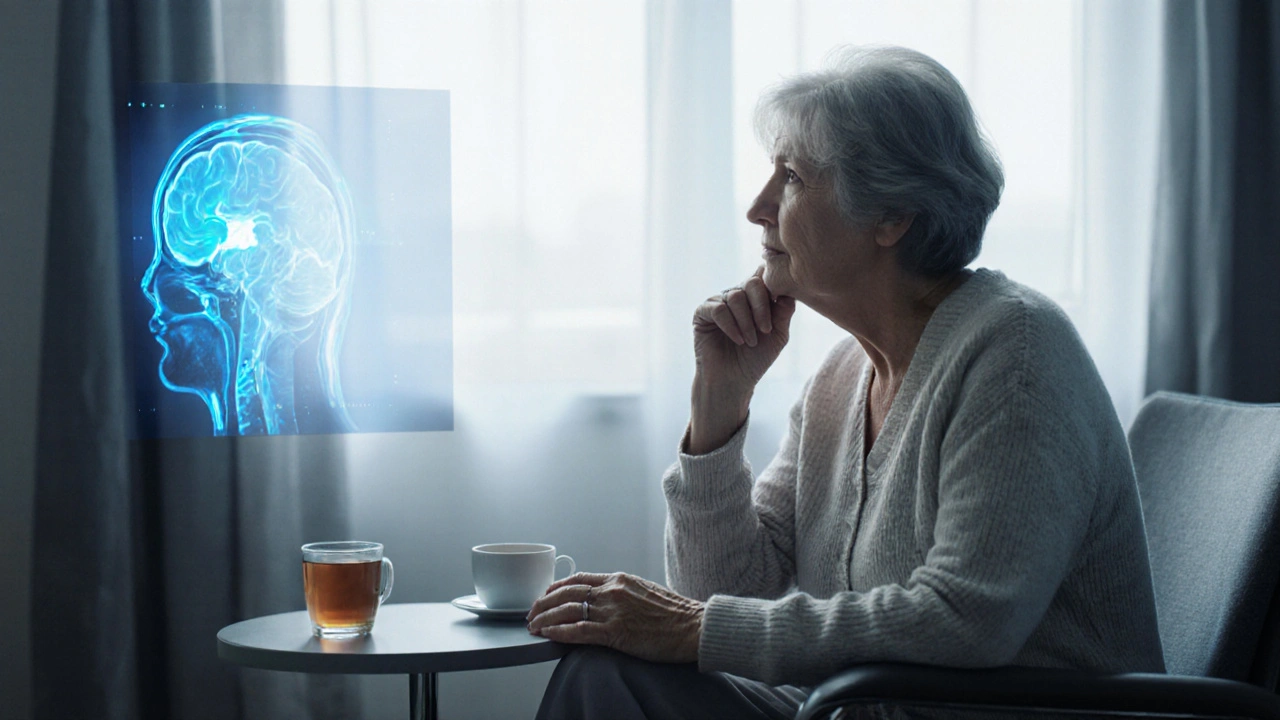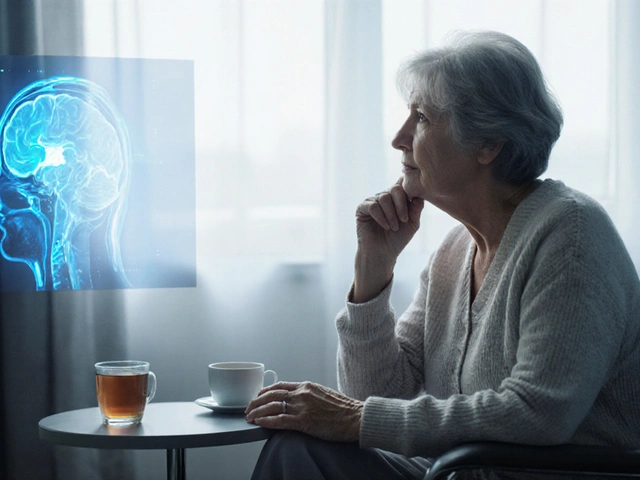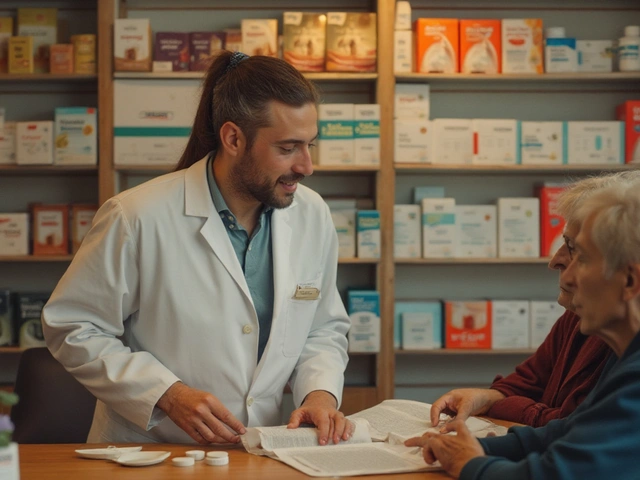Post-Stroke Depression Risk Calculator
Enter your details and click "Calculate Risk Level" to assess your risk of post-stroke depression.
When someone survives a stroke, the battle doesn’t end with physical recovery. Many face a hidden challenge called post-stroke depression, a mood disorder that can stall rehabilitation and lower quality of life. This guide breaks down why it happens, how to spot it, and what you can do to get back on track.
Quick Takeaways
- Post-stroke depression affects up to 1 in 3 stroke survivors.
- Risk spikes with severe brain injury, lack of support, and previous mood disorders.
- Common signs include persistent sadness, loss of interest, fatigue, and changes in sleep or appetite.
- Effective treatments combine medication, psychotherapy, and tailored rehabilitation.
- Early screening by a neurologist or mental‑health professional improves outcomes.
What Is Post-Stroke Depression?
Post-Stroke Depression is a clinical depression that develops after a cerebrovascular accident (stroke), typically within the first few months but sometimes later. It’s not just “feeling sad” after a health scare - it meets the same diagnostic criteria as major depressive disorder, with the added complexity of brain injury.
Why Does It Happen?
The brain’s chemistry and structure shift after a stroke. Damage to areas that regulate mood-such as the frontal lobe, basal ganglia, or limbic system-can throw neurotransmitters like serotonin, dopamine, and norepinephrine out of balance. Add the stress of disability, loss of independence, and financial strain, and you have a perfect storm for depression.
Key biological contributors include:
- Lesions in the left frontal cortex, which are linked to reduced motivation and pleasure.
- Inflammatory responses that raise cytokine levels, known to affect mood.
- Reduced cerebral blood flow that hampers the brain’s ability to produce mood‑stabilizing chemicals.
Who Is Most at Risk?
Stroke is a sudden interruption of blood supply to the brain, causing tissue damage and functional loss survivors with the following factors are more likely to develop depression:
- Severe neurological deficits (e.g., paralysis, speech problems).
- History of mood disorders before the stroke.
- Older age combined with social isolation.
- Female gender - studies show a modestly higher incidence.
- Lack of a strong caregiver network or community support.
Understanding these risk markers helps clinicians prioritize screening.
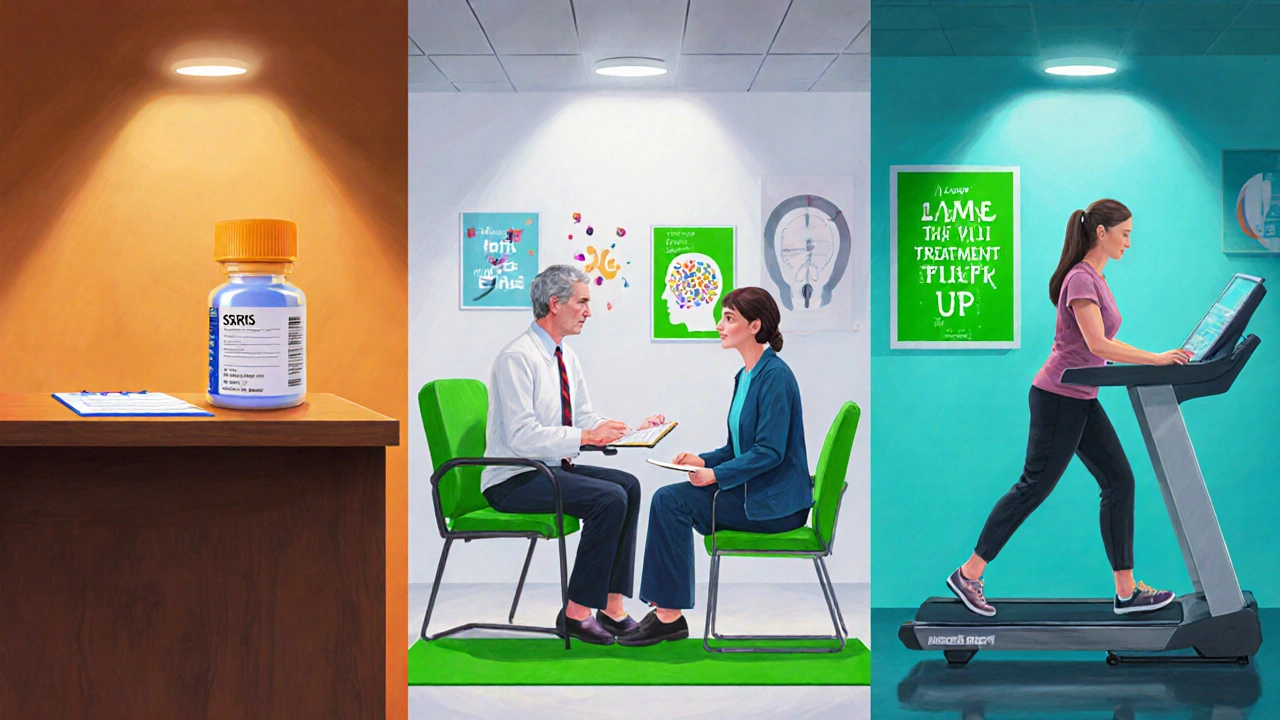
Spotting the Signs
Depression is a mental‑health condition characterized by persistent low mood, loss of interest, and a range of physical and cognitive symptoms after a stroke can look slightly different because physical impairments may mask emotional cues. Watch for:
- Persistent sadness or tearfulness for more than two weeks.
- Loss of pleasure in activities once enjoyed (e.g., hobbies, socializing).
- Fatigue that isn’t explained by physical exhaustion.
- Changes in appetite or weight-either loss or gain.
- Sleep disturbances: insomnia or hypersomnia.
- Feelings of worthlessness, guilt, or excessive self‑criticism.
- Difficulty concentrating, which further impedes rehab.
- Thoughts of death or suicidal ideation-always treat as an emergency.
Because some symptoms overlap with stroke sequelae (e.g., tiredness, appetite changes), a formal assessment is essential.
Getting a Proper Diagnosis
Screening tools like the Patient Health Questionnaire‑9 (PHQ‑9) or the Stroke Aphasia Depression Questionnaire (SADQ) are validated for post‑stroke populations. A neurologist, psychiatrist, or primary‑care physician typically conducts the evaluation, looking at symptom severity, functional impact, and medical history.
Key steps in the diagnostic pathway:
- Administer a standardized depression scale during a routine follow‑up.
- Rule out medical contributors (e.g., pain, infections, medication side effects).
- Consider neuroimaging to identify lesion locations linked to mood changes.
- Collaborate with a Neurologist a physician specialized in disorders of the nervous system, including stroke to interpret findings.
Treatment Options Overview
Evidence shows that a multimodal approach yields the best outcomes. Below is a quick rundown of the three main pillars.
1. Medication
Antidepressants are drugs that modify neurotransmitter levels to alleviate depressive symptoms are often first‑line, especially when symptoms are moderate to severe.
- Selective serotonin reuptake inhibitors (SSRIs) - sertraline, escitalopram. Preferred for safety profile and minimal interaction with common stroke medications (e.g., antiplatelets).
- Serotonin‑norepinephrine reuptake inhibitors (SNRIs) - venlafaxine, duloxetine - useful if pain co‑exists.
- Tricyclic antidepressants are generally avoided due to anticholinergic side effects that can worsen cognition.
Start low, go slow: a typical dose of sertraline for PSD is 25mg daily, titrated up to 100mg over 2-3 weeks. Monitor for bleeding risk, especially if the patient is on aspirin or clopidogrel.
2. Psychotherapy
Talk‑based therapies address the emotional fallout and help patients rebuild coping skills.
- Cognitive‑behavioral therapy (CBT) - focuses on identifying negative thought patterns and replacing them with realistic alternatives. Studies show a 30‑40% reduction in PHQ‑9 scores for PSD patients.
- Interpersonal therapy (IPT) - useful when role changes after stroke trigger grief or conflict.
- Problem‑solving therapy (PST) - teaches practical steps for dealing with daily challenges, boosting self‑efficacy.
Sessions can be delivered in‑person, via telehealth, or in group formats located at stroke recovery centers.
3. Rehabilitation‑Focused Interventions
Physical and occupational therapy aren’t just for motor skills; they also improve mood by increasing activity levels and providing social interaction.
- Exercise programs (e.g., treadmill walking, aquatic therapy) release endorphins and have been shown to lower depressive scores by up to 20%.
- Social‑participation groups - art therapy, music circles - create a sense of belonging.
- Mindfulness‑based stress reduction (MBSR) incorporated into rehab sessions can enhance emotional regulation.
Choosing the Right Plan
Every survivor’s situation is unique. Use the following decision matrix to match treatment intensity with symptom severity and personal preference.
| Option | Typical Onset of Benefit | Side‑Effect Profile | Best For |
|---|---|---|---|
| SSRIs (e.g., sertraline) | 2-4 weeks | Possible nausea, sexual dysfunction; low bleeding risk | Moderate‑to‑severe depression, quick symptom relief needed |
| CBT (individual) | 6-12 weeks | None (except possible emotional discomfort during sessions) | Patients motivated for active self‑work, mild‑moderate symptoms |
| Combined Medication + CBT | 1-3 weeks (meds) + 6-12 weeks (CBT) | Cumulative of both; monitor drug interactions | Severe depression with functional impairment |
| Exercise‑Based Rehab | 4-8 weeks | Low; risk of falls if not supervised | Patients needing physical recovery plus mood boost |
Discuss options with a multidisciplinary team-neurologist, psychiatrist, physiotherapist, and social worker-to craft a plan that respects medical safety and personal goals.
Supporting Recovery at Home
Family members and caregivers play a pivotal role in spotting early warning signs and encouraging adherence.
- Schedule regular check‑ins: ask open‑ended questions like, “How are you feeling today?” rather than yes/no prompts.
- Help maintain a structured daily routine-consistent waking times, meals, and gentle activity.
- Watch medication timing and side‑effects; keep a pill‑box and a brief symptom diary.
- Facilitate social engagement: community groups, virtual meet‑ups, or simple coffee visits.
- Know when to call emergency services: any mention of suicide, self‑harm, or sudden drastic mood swing.
Providing emotional validation-recognizing the loss of independence without judgment-often reduces isolation, a key driver of depression.
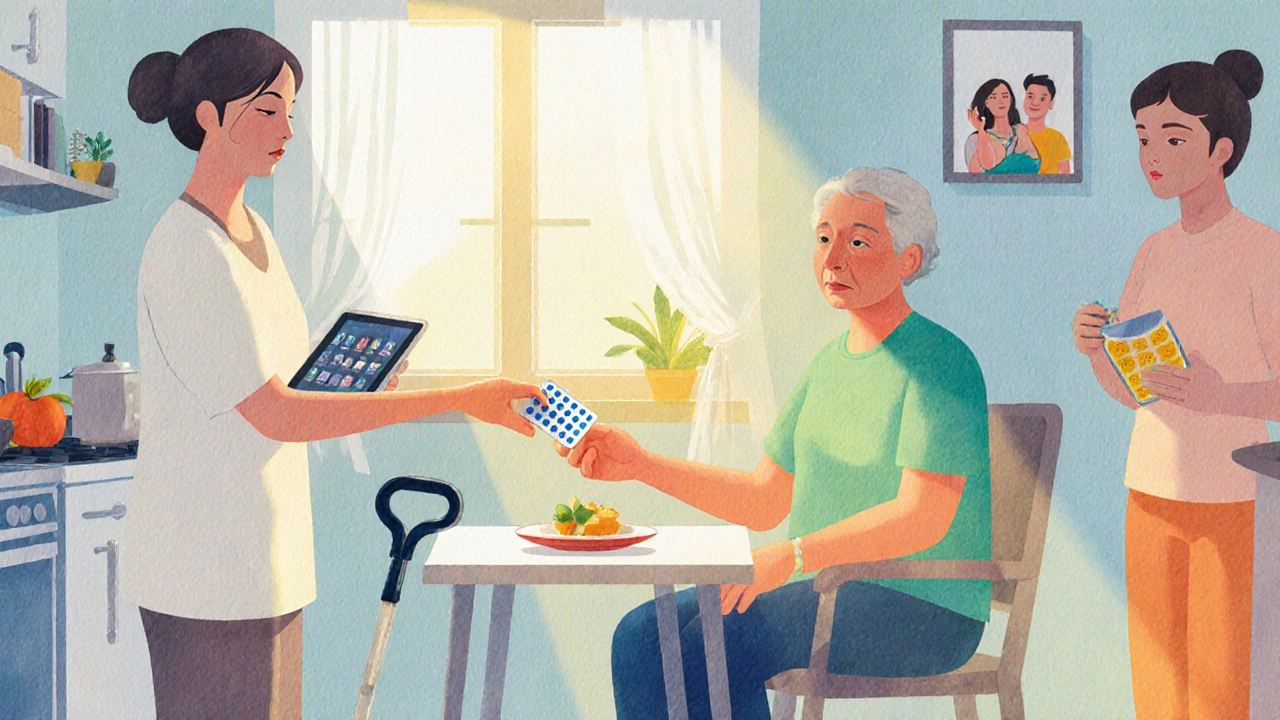
Frequently Asked Questions
How soon after a stroke can depression develop?
Depressive symptoms can appear within days, but most clinicians see a peak incidence between 1 and 3 months post‑stroke. Late‑onset cases up to a year later are also documented.
Can antidepressants worsen stroke recovery?
Generally no. SSRIs have been shown to be safe and may even improve neuroplasticity. However, clinicians monitor for bleeding risk if patients are on antiplatelet therapy.
Is psychotherapy covered by health insurance?
In Canada, provincial health plans often cover a limited number of sessions with a psychiatrist or psychologist when prescribed for a medical condition like post‑stroke depression. Private plans vary, so checking the policy is essential.
What lifestyle changes help reduce depressive symptoms?
Regular low‑impact exercise, balanced nutrition, adequate sleep, and social connection are all evidence‑based. Even short daily walks outdoors can boost serotonin levels.
When should I seek emergency help?
If the survivor expresses suicidal thoughts, shows signs of self‑harm, or experiences a sudden, severe mood shift, call emergency services immediately. Early intervention can be life‑saving.
Post‑stroke depression is treatable, but it requires vigilance, timely assessment, and a coordinated care plan. By understanding the causes, recognizing the signs, and embracing the right therapies, survivors can regain motivation, improve functional outcomes, and enjoy a better quality of life.

